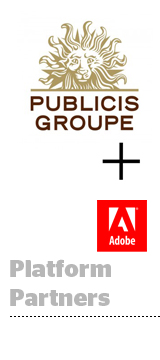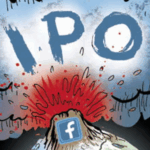 Publicis Groupe will make Adobe Marketing Cloud technology available to clients across its agency portfolio, the companies revealed Wednesday.
Publicis Groupe will make Adobe Marketing Cloud technology available to clients across its agency portfolio, the companies revealed Wednesday.
Under the deal, the Paris-based holding company’s agencies will package Adobe MediaOptimizer and Adobe AudienceManager as part of a solution with the name Publicis Groupe Always-On Platform.
It’s not the first time the companies have worked together on a large technology integration. Publicis-owned Razorfish is one of Adobe’s top two agency partners globally (the other is Sapient Nitro), and DigitasLBi also uses elements of its stack.
The latest agreement puts Adobe’s digital marketing products in the hands of many others across the network, including Starcom MediaVest Group, VivaKi, ZenithOptimedia, BBH, Leo Burnett, Publicis Worldwide, Rosetta and Saatchi & Saatchi.
Brad Rencher, SVP and GM of Adobe’s Digital Marketing business unit, told AdExchanger that Wednesday’s alliance is a broad strategic deal where Publicis will essentially create a common data layer across its agencies.
“There are multiple facets to this, but it is a stepping up and increased usage of Adobe Marketing Cloud,” Rencher said during a sitdown at DMEXCO. “They’ve licensed AudienceManager to be the DMP [data-management platform] across all of their agencies and can extend that to all of their customers.”
That DMP supports multitouch attribution, segmentation and campaign automation drawing from a centralized repository of data and marketing intel.
One deliverable of the partnership is the ability for VivaKi to develop what Stephan Beringer, chief growth officer and president of VivaKi Audience on Demand, described as “a data pool that provides information needed by marketers for benchmarking” against different attributes.
For instance, within a closed environment where privacy is the foundational component, a data co-op may be beneficial between an airline and a car rental company, each of which could learn and improve campaign iteration from the other’s data, Rencher hypothesized.
“There’s already significant expertise within the Publicis Group around implementing Adobe technology, [but] it’s becoming more of an industry standard approach to how you introduce a broader transformation project,” Rencher said. “There are practice areas and pillars they will have around Adobe technologies. There are really interesting co-development opportunities.”
What about marketers that have their own DMP and DSP technology?
A prerequisite for the agreement was that Adobe’s products not override the DMP and marketing stack solutions of Publicis clients. Similarly they must interoperate with the many DSPs and media-buying platforms already used across the holding company network. (VivaKi works with 10 to 20 at any given time.)
“Adobe is very committed to an open ecosystem. One of our big requirements up front is that they work with all of our primary DSPs,” said Kelley Maves, VP for data solutions and product at VivaKi. “If the DMP is going to be part of the client or agency solution, we need to make sure it’s going to work with all these partners we’re already deeply embedded with. While there’s value in having that master marketing record and that integrated ID within different marketing technologies, that’s not to say that’s the only way to approach it. ”
Additionally, Publicis believes it can perform a valuable user ID-matching service across its client base – an increasingly important function in the age of the crumbling cookie.
“Because of the scale we have from both a media spend perspective and the large number of advertisers we work with, we have the opportunity to increase match rates through pixel swapping,” Maves said. “We can help the overall ecosystem.”
Makes sense. But will clients stomach the potential combination of their user IDs with those of competitors, even if it’s only for the purpose of increasing match rates?
“We have not seen pushback at this point,” Maves said. “This will require an explanation of what we’re doing, why and so on. A primary goal is to create more value.”
Zach Rodgers contributed.













